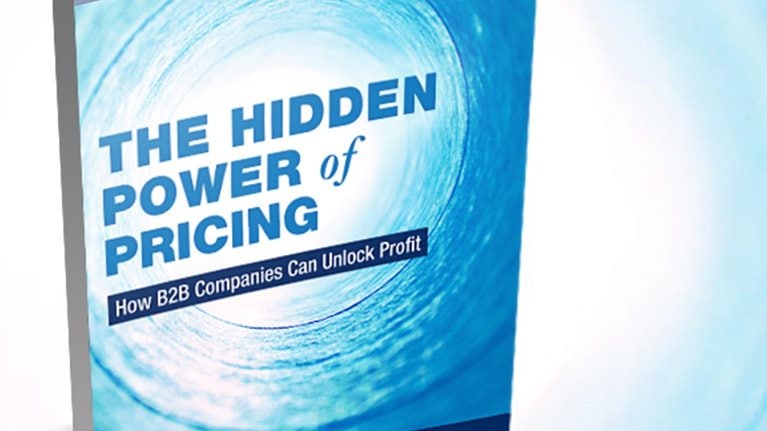Pricing has become a Big Data question without an easy answer. The vast complexity around pricing today presents many B2B companies with a dilemma: how to increase returns by making better pricing decisions without investing prohibitively high amounts of time, effort, or resources.
The technology exists to make better pricing decisions. What is often lacking, however, is a complete program that integrates the technology with the people on the front lines who will be using it and a system to sustain pricing excellence over time.
That challenge bedeviled one multinational chemicals company. The majority of its pricing decisions tended to be based on across-the-board “mass pricing,” resulting in significant losses. Unwarranted high prices were driving “good customers” away, while opportunities were squandered with customers who were willing to pay more. Pricing complexity—thousands of products for tens of thousands of customers—made it difficult to develop a manageable fact base for sales reps and get to a level of detail that would unlock pricing opportunities.
Here are the stages that were successful for this multinational chemicals company:
1. Build an analytics engine
Before analyzing the data, the team had to create a useful data set. Pulling in and cleaning data from several different sources, they created a huge data warehouse containing all the transaction history on price, products, and customers for the previous year. For the first time, the company had full transparency into the real cost of deploying pricing and sales force discount strategies.
Making sense (and use) of the data, however, required a sophisticated tool. The company developed one based on statistical algorithms that allowed the team to get a much more granular view of prices and customers. For example, it clustered segments by product and recommended target prices for each one. The tool also incorporated advanced visualization techniques so that pricing and sales reps on the front lines could easily understand and manipulate the data.
2. Involve the front line
The tool determined pricing guidelines, but they had to be tested. The pricing-analytics team incorporated active input from the front-line pricing and sales managers, who had good experience with individual customers and the marketplace. The managers and reps reviewed each price recommendation and adjusted it for the risk of losing customers.
This risk-adjustment phase incorporated quantitative and qualitative factors (such as average profitability per client or recency of the pitch) covering market, customer, and product specifics. To help with the assessment, the team developed a simple sales-force risk survey that only took fifteen seconds to answer for each customer.
3. Keep the implementation simple
Many good pricing solutions get bogged down in cumbersome validation procedures. To eliminate that problem, the team developed an online work-flow management system that used advanced visualization techniques so that sales managers and reps could quickly review and validate the size and timing of every price increase. It also provided standardized validation analyses, such as benchmarks vis-à-vis other sales reps, to help sales managers challenge the sales force to perform better.
This referral and approval process was simplified by incorporating it within a single system, while the output of validated prices was tailored so as to be uploaded to the client’s existing software systems. Critical to the success of the approach was having the client influence how it was developed (such as choosing how to quantify the risk variables) as well as tailoring the output to be easily integrated into existing Enterprise Resource Planning (ERP) systems.
4. Build for the long term
The most difficult part of a pricing program is getting beyond the initial short-term burst of energy. The company committed to a program grounded on training a set of trainers, who were made responsible for replicating the initial program throughout the organization. The training focused on helping pricing managers better segment customers, design the right risk assessment for a specific business unit, and build support across the organization.
To build confidence in the front-line sales force to negotiate and implement pricing changes, the team developed experiential learning programs that required reps to take part in tailoring the pricing approach, practice customer negotiations in specifically designed role plays, and engage in brainstorming sessions to generate price-increase arguments/counterarguments.
Impact
This effort resulted in a return on sales between 3 percent and 7 percent across seven different countries in which the company rolled out the program.

